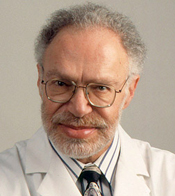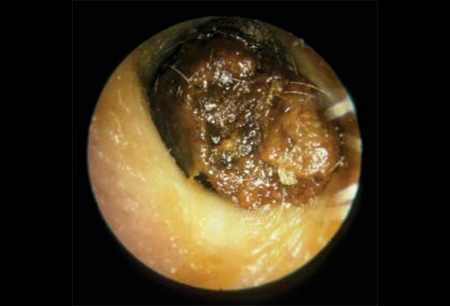Resumo
Definição
História e exame físico
Principais fatores diagnósticos
- presença de fatores de risco
- visualização do cerume
- perda auditiva
- plenitude aural
Outros fatores diagnósticos
- otorreia
- otalgia
- zumbido
- tosse
- vertigem
Fatores de risco
- idade >50 anos ou <5 anos
- sexo masculino
- meato acústico externo estenótico
- Síndrome de Down
- uso de cotonetes
- uso de prótese auditiva
- morar em uma instituição asilar
Investigações diagnósticas
Investigações a serem consideradas
- audiograma
Algoritmo de tratamento
todos os pacientes
Colaboradores
Autores
Stephen Wetmore, MD, MBA, FACS

Professor Emeritus
Department of Otolaryngology
West Virginia University School of Medicine
Morgantown
WV
Declarações
SW declares that he has no competing interests.
Revisores
Rahul K. Shah, MD, FAAP
Associate Professor of Otolaryngology and Pediatrics
Division of Otolaryngology
Children's National Medical Center
Assistant Professor
Otolaryngology and Pediatrics
George Washington University School of Medicine and Health Sciences
Washington
DC
Declarações
RKS declares that he has no competing interests.
Seth R. Schwartz, MD, MPH
Director of Research
The Listen For Life Center At Virginia Mason
Otology/Otolaryngology
Department of Otolaryngology
Virginia Mason Medical Center
Seattle
WA
Declarações
SRS is an author of a reference cited in this topic.
Robin Youngs, MD, FRCS
Consultant Otologist
Gloucestershire Royal Hospital
Gloucester
UK
Disclosures
RY declares that he has no competing interests.
Peer reviewer acknowledgements
BMJ Best Practice topics are updated on a rolling basis in line with developments in evidence and guidance. The peer reviewers listed here have reviewed the content at least once during the history of the topic.
Disclosures
Peer reviewer affiliations and disclosures pertain to the time of the review.
References
Key articles
Schwartz SR, Magit AE, Rosenfeld RM, et al. Clinical practice guideline (update): earwax (cerumen impaction). Otolaryngol Head Neck Surg. 2017 Jan;156(1_suppl):S1-29.Full text Abstract
Roeser RJ, Ballachanda BB. Physiology, pathophysiology, and anthropology/epidemiology of human ear canal secretions. J Am Acad Audiol. 1997;8:391-400. Abstract
Horton GA, Simpson MTW, Beyea MM, et al. Cerumen management: an updated clinical review and evidence-based approach for primary care physicians. J Prim Care Community Health. 2020 Jan-Dec;11:2150132720904181.Full text Abstract
Roland PS, Eaton DA, Gross RD, et al. Randomized, placebo-controlled evaluation of Cerumenex and murine earwax removal products. Arch Otolaryngol Head Neck Surg. 2004 Oct;130(10):1175-7.Full text Abstract
Aaron K, Cooper TE, Warner L, et al. Ear drops for the removal of ear wax. Cochrane Database Syst Rev. 2018 Jul 25;7:CD012171.Full text Abstract
Reference articles
A full list of sources referenced in this topic is available to users with access to all of BMJ Best Practice.

Differentials
- Otite externa
- Ceratose obliterante
- Pólipo do meato acústico externo
More DifferentialsGuidelines
- Clinical practice guideline (update): earwax (cerumen impaction)
More GuidelinesPatient information
Cerume
More Patient informationLog in or subscribe to access all of BMJ Best Practice
Use of this content is subject to our disclaimer